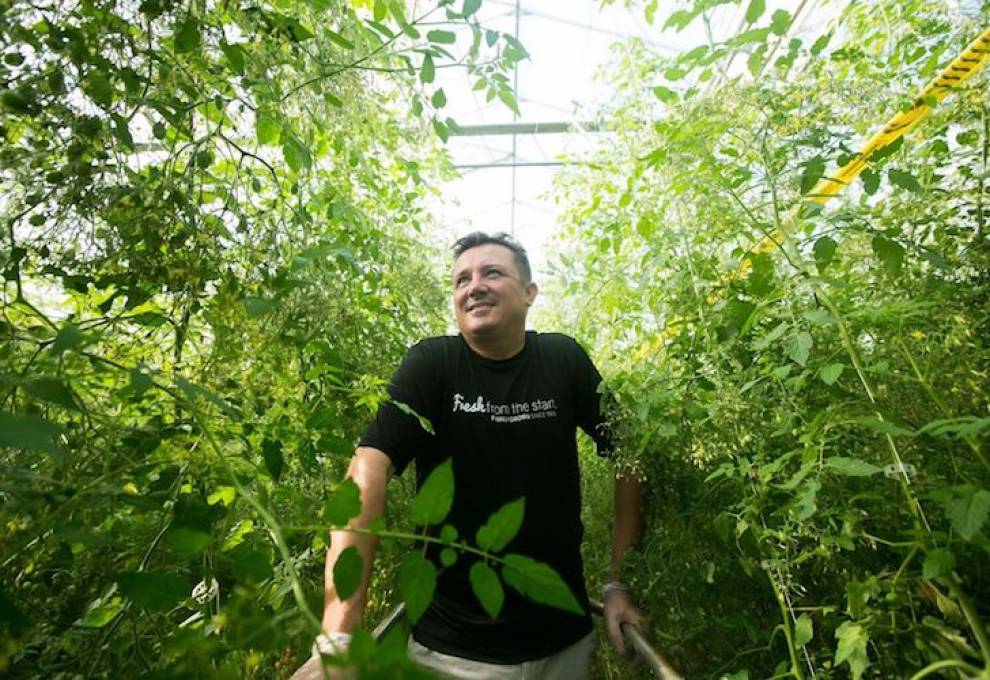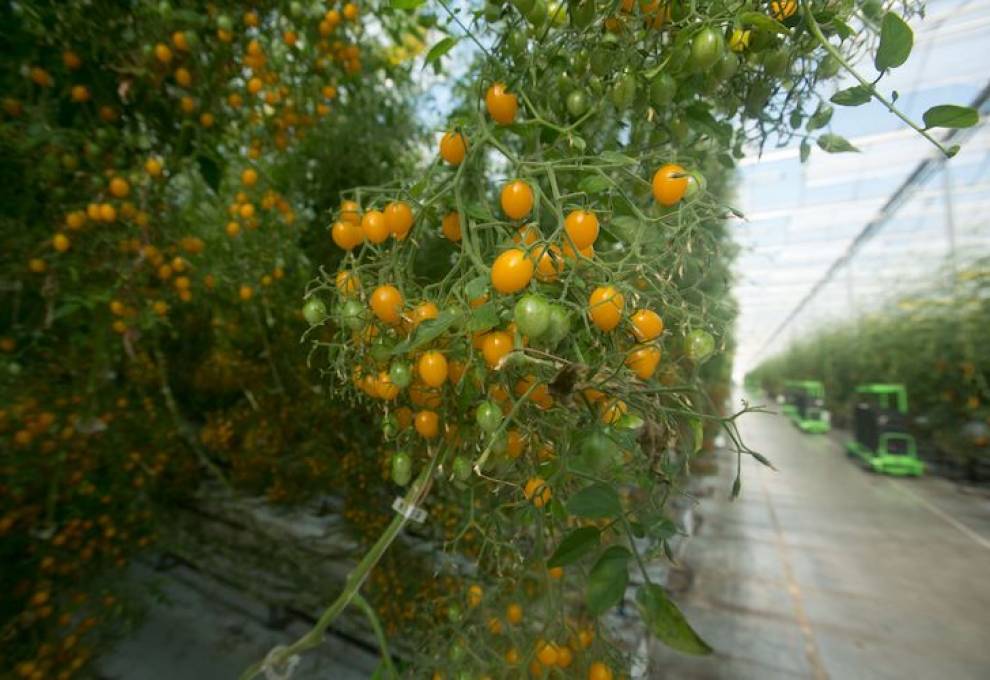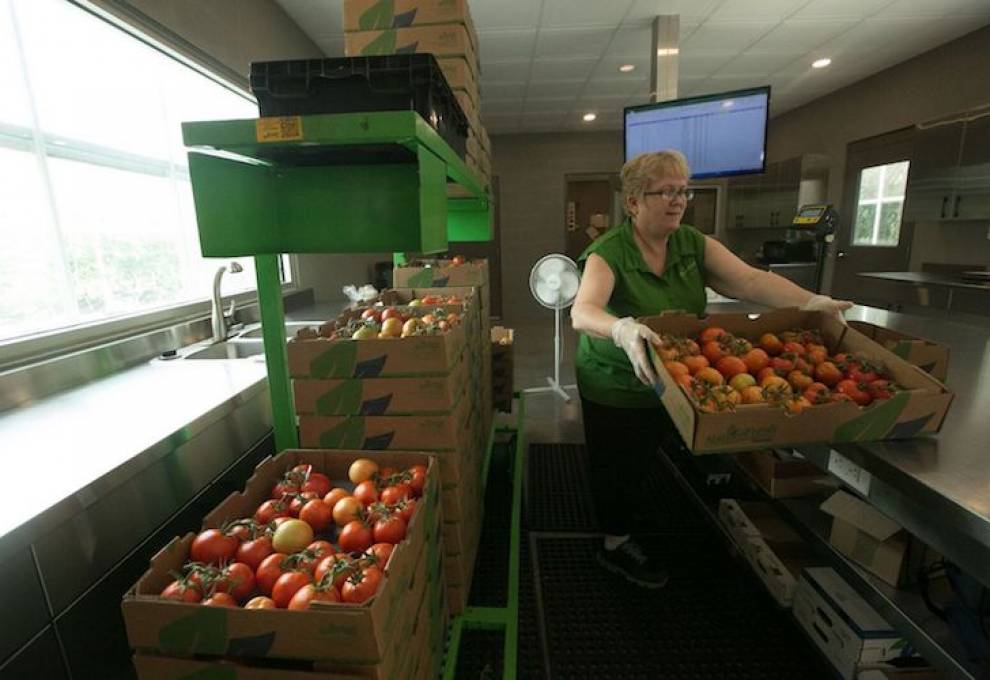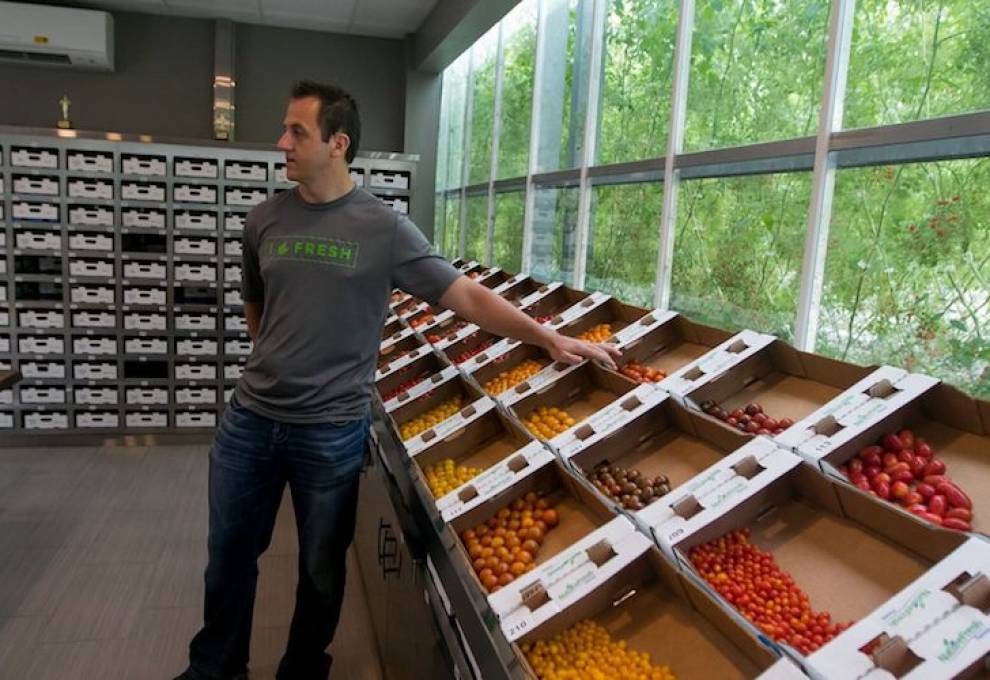



Timbits, move over. The Tomberry has arrived.
This pearl of a snacking tomato is part of the trend towards pint-sized produce. Think mini-peppers or cocktail cucumbers.
The surprise is that the Tomberry grows on a tangled, lacy bush. It’s the responsibility of Isaac Braun to tame the spindly plant and to harvest a marketable product. As head grower for 60 acres of peppers, organic peppers and specialty tomatoes for NatureFresh Farms, he’s up to the task.
“The Tomberry is not your typical tomato,” says Braun. “It’s more of a wild berry plant. When I first saw this skinny plant, I worried that it would be too weak for high summertime temperatures. You have to aggressively deleaf this plant and stress it for it to perform. It’s also more susceptible to fungal diseases.”
It took two years of trials -- one in Wageningen, Netherlands, the heart of greenhouse research and another year at the Leamington, Ontario headquarters before launching the Tomberry to Canadian and American markets in spring 2018. In Canada, it’s exclusively available under the President’s Choice label owned by Loblaw.
For now, the Tomberry is grown from mid-March to mid-November. From planting to ripening, Braun counts on 11 weeks until hand harvesting. The bottom cluster is plucked off the bush and shaken to release the tomatoes. They are then graded and placed in 4.5 ounce pack.
The miniature tomato is not that new according to Benny Teichroeb, head of research and development for NatureFresh Farms. Eminent Seeds developed the plant in Europe where it’s been widely seen in trial development. For some, a brix level that averaged six wasn’t exciting enough. True, it’s not super sweet compared to other snacking tomatoes.
What piqued the interest of NatureFresh Farms was how it could be marketed as the world’s smallest tomato, not just directly to consumers, but more importantly to the foodservice industry. The tip-off to that insight was the in-house chefs who cook at NatureFresh.
“The Tomberry is versatile in salads or as a fresh snack,” says Teichroeb. “You don’t have to cut it up. And for high-end restaurants, it’s ideal for garnishes. The taste is good, but the unique size is the tipping point.”
For the produce industry, the heft of foodservice grows every year. Consider that in 2017, the sector was valued at $29 billion according to Foodservice and Hospitality Magazine. Commentators say that one trend is towards unique, plant-based items.
With the thumbs-up from chefs and further accolades from retailers at the 2017 Produce Marketing Association show in New Orleans, NatureFresh committed to commercializing the Tomberry. The operation’s 2.5 acre Discovery Centre was key in marshalling the resources. Now in its third year of operation, the Discovery Centre has 12 nutrient-feeding zones, a testing laboratory, a set-up for consumer taste panels and an air-conditioned boardroom showcasing all varieties under investigation.
“This has been an amazing resource,” explains Teichroeb. “What was once scattered all over 130 acres is now concentrated with consistent access to labour to collect samples. It’s an ideal place to showcase progress to various seed companies and retailers while retaining confidentiality of specific lines.”
For Peter Quiring, founder and owner of NatureFresh Farms, the Discovery Centre is a natural progression. His own 20 years in the greenhouse vegetable industry has been an intense timeline of discovery. Originally, his South Essex Fabricating business built greenhouses before he decided to become a grower himself. The Leamington headquarters consist of several phases that comprise 130 acres with another 32 acres under construction. A 45-acre facility grows specialty tomatoes in Delta, Ohio.
The Discovery Centre allows the science of growing and the art of marketing to come together under one roof. For example, all the yield and brix test results are available throughout the entire growing cycle, but so are the consumer taste panel results.
“We market to consumers,” says Quiring. “The retailer is the middle person.”
Quiring expects to be trialling melons, strawberries, blueberries and lettuce in the next couple years.
“With the Tomberry, we realize that it’s a cool item, but it’s not a high-volume item,” says Quiring. “We’ll grow on a bigger scale next year, about four acres.”
Karen Davidson, editor, goes "Behind the Scenes" of this story in a podcast with Peter Quiring. Listen here.

Add new comment